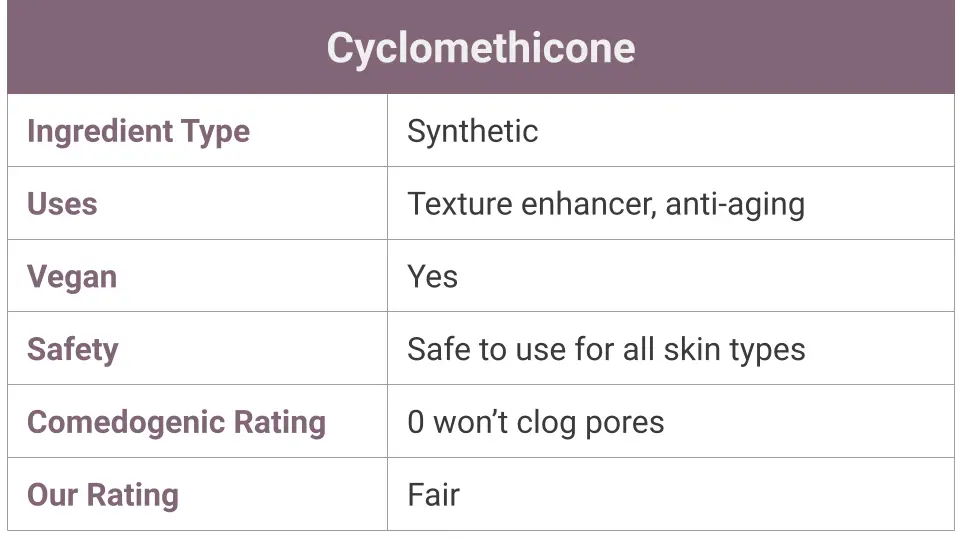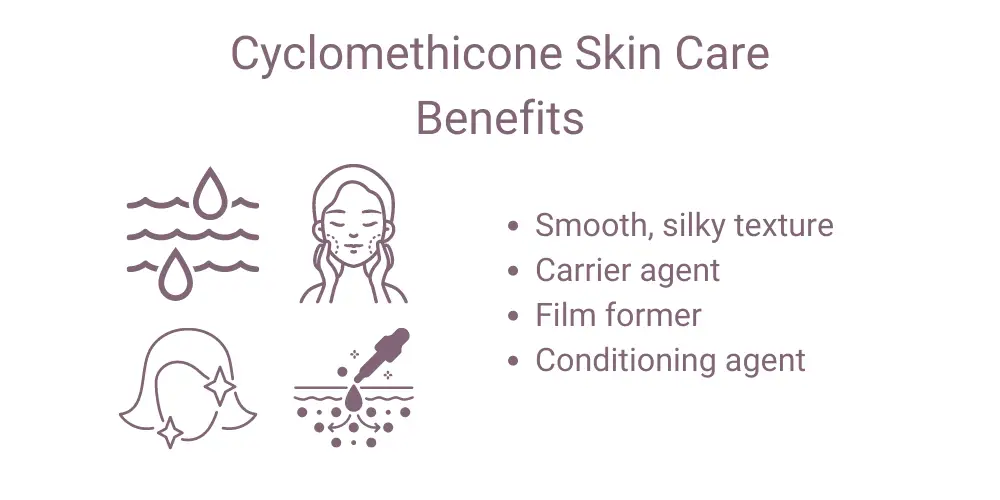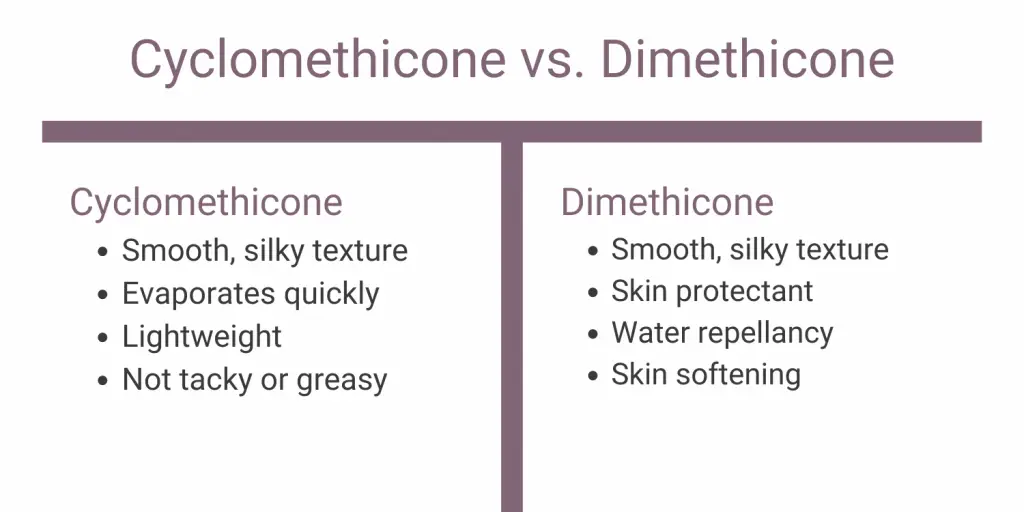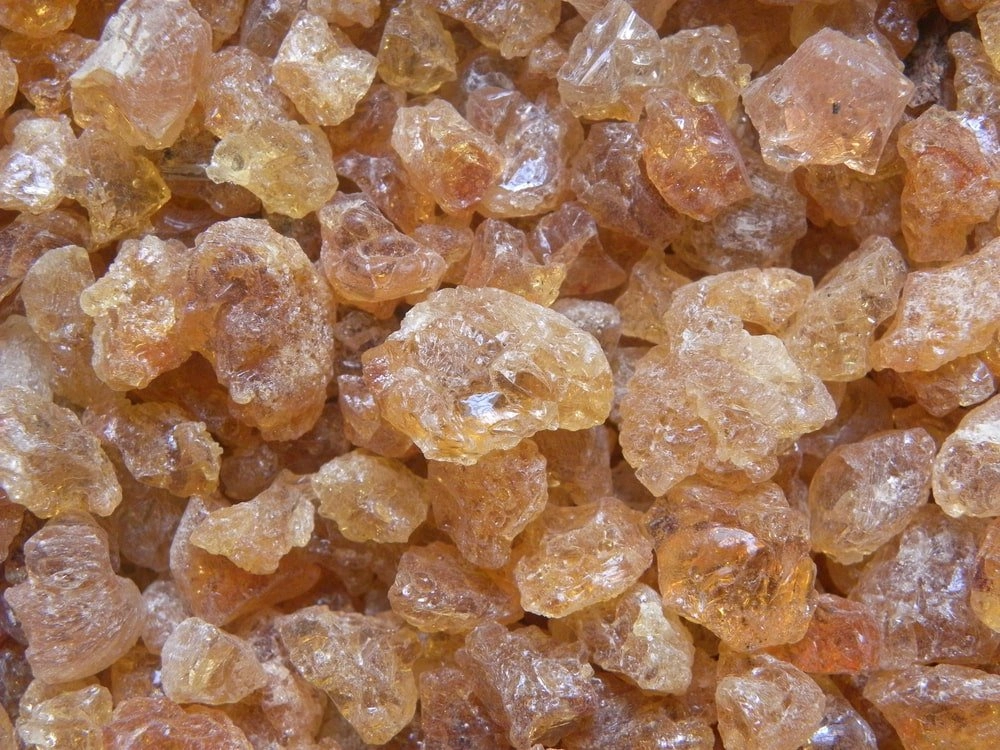This silicone is a lightweight ingredient that has a smooth and silky texture. It absorbs quickly into the skin. Cyclomethicones have a low risk of irritation and don’t clog your pores. It’s not a bad ingredient but it’s not a super clean one either.
This post may contain affiliate links. Read the full disclosure here
Silicones give products that feathery light, silky texture that easily smooths over the skin. You get these benefits without a tacky, greasy, or sticky feel. The product experience with silicone-based ingredients is nice but it’s not for everyone.
There isn’t much research that effectively claims silicone is bad for the skin or will clog your pores. However, there are environmental impacts of silicone ingredients that are worth considering.
What is Cyclomethicone?
Cyclomethicones are a type of silicone that gives products that silky texture and makes them easier to spread. It’s a thin, clear liquid that’s ultralight, slippy, and luxurious. When looking at an ingredient label, you may find ingredients such as cyclopentasiloxane and cyclohexasiloxane. These are both types are cyclomethicones.

Cyclomethicone is a general term that includes blends of cyclic siloxane materials derived from silicon and oxygen.
Ingredients in this silicone subclass have a ring-shaped structure, which makes them less stable. In many cases, a volatile ingredient is not good for a skincare formula. But this is not the case for cyclomethicone.
The instability allows this ingredient to quickly evaporate when applied to the skin. This is a nice touch since it can make a product nice a smooth without leaving a sticky or greasy residue behind. This process also makes for a great carrier ingredient to improve the effectiveness of other ingredients.
Top Cyclomethicone Ingredients
Since cyclomethicone is a subclass of silicone, you might be wondering what are the most common ingredients in this class? Here are some examples of cylcomethines you might find on ingredient labels:
- octamethylcyclotetrasiloxane
- cyclopentasiloxane
- cyclohexasiloxane
- decamethylcyclopentasiloxane
Cyclomethicone Skin Benefits and Uses
This silicone is useful in skincare, haircare, personal care, and cosmetics formulations. Cyclomethicone gives products a smooth silky texture, helps them spread, conditions, is a solvent, carrier ingredient, and a film former.

Improves Product Texture and Feel
That nice silky texture in luxury beauty products is often from a silicone-based ingredient such as cyclomethicone. It helps provide a smooth product texture that is easy to spread across the skin.
Products are more effective when evenly applied across the skin. Also, with better spreadability, a little bit of product can go a long way!
Carrier Ingredient
Cyclomethicone is an excellent carrier ingredient. It makes spreading the product easy and then evaporates leaving potent ingredients to deliver results.
This silicone ingredient offers a lightweight feel and doesn’t leave the skin sticky or greasy.
Film Former
Similar to other silicone ingredients, cyclomethicone forms a water repellent barrier that can protect the skin. However, since this ingredient evaporates quickly it’s not as good at this as other silicone-based ingredients.
Conditioning Agent
Cyclomethicone helps soften and smooth skin and hair. It dries quickly so it’s not as effective as other silicone ingredients. But this ingredient leaves the skin with a smooth silky finish.
Is Cyclomethicone Safe for Skin?
The Cosmetic Ingredient Review Expert Panel considers cyclomethicone, cyclotetrasiloxane, cyclopentasiloxane,
cyclohexasiloxane, and cycloheptasiloxan safe to use with present practices and concentrations. In rare cases, cyclomethicone can cause skin and eye irritation.
Even though the CIR considers this ingredient safe, EWG’s Skin Deep gave cyclomethicone a rating of 6. This “fair” rating is based on research that found a decrease in reproductive hormones in rats. The study measured hormone levels of rats after inhaling octamethylcyclotetrasiloxane (a common cyclomethicone).
These concerns don’t translate to danger using topically, but it’s worth noting.
Cyclomethicone vs Dimethicone
How does cyclomethicone compare to other silicones like dimethicone? They both offer similar product texture and smoothing benefits.

Cyclomethicone is a better option as a carrier ingredient since it evaporates quickly. It may also be a desired option for products that are intended to feel lightweight.
On the other hand dimethicone is a better option for products intended to stay on the skin longer. For instance, sunscreen, foundation, or primers might have better use for dimethicone. This silicone offers better water repellency, skin protectant, and skin softening benefits.
Does Cyclomethicone Clog Pores?
Contrary to popular belief, most silicone ingredients are non-comedogenic. In other words, they won’t clog your pores.
Cyclomethicone has a comedogenic rating of 0, meaning it will not clog your pores. This is the lowest possible comedogenic rating, which is the best score for blemish or acne-prone skin. The comedogenic rating scale assigns a value from 0-5, gauging the probability of clogging pores. The lower the score, the less likely an ingredient will clog your pores.

This silicone does not penetrate pores where blemishes are formed. Also, cyclomethicone’s unique evaporating property decreases the chances of it blocking pores even more than other silicone ingredients.
Frequently Asked Questions
Find answers to some of the most commonly asked questions about cyclomethicone.
Related Articles You Might Like:




